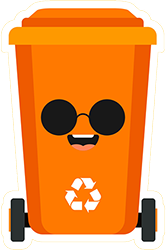From the smartphones we carry every day to the industrial robots powering our factories, electronics are integral to modern life. But what becomes of these devices once they’re no longer usable? At Central Waste, we’re committed to ensuring that the disposal of these electronics, often referred to as Waste Electrical and Electronic Equipment (WEEE) is handled responsibly. We see this as essential for paving the way toward a sustainable future.
What is WEEE?
Simply put, WEEE is any discarded electrical or electronic device. This includes everything from toasters and TVs in your kitchen to computers and printers in your office. These items hold valuable resources like gold and copper, but they also contain harmful materials like lead and mercury. Proper WEEE recycling ensures these resources are recovered for future use and the hazardous materials are handled safely.
Why Recycle Electronics?
There are two major reasons why WEEE recycling is necessary: protecting our environment and conserving precious resources.
- Environmental Protection: Landfills are overflowing with electronics, and improper disposal can lead to these hazardous materials leaching into the soil and water, posing a threat to human health and ecosystems. Recycling removes these harmful components and ensures their safe disposal.
- Resource Recovery: Electronics are packed with valuable resources like gold, silver, and copper. By recycling, we can extract these materials and put them back into circulation, reducing reliance on environmentally damaging mining practices. This lowers our carbon footprint and creates a more circular economy.
The Journey of a Recycled Electronic Device
- Collection: The first step is getting your old electronics out of your house or office. Look for designated drop-off points at recycling centres or electronics retailers.
- Transportation: Once collected, these devices are transported to specialised recycling facilities.
- Treatment: At these facilities, the electronics are carefully dismantled. Hazardous components are removed for safe disposal, and valuable materials are separated for recovery.
- Recovery: Extracted materials like metals and plastics are purified and processed for reuse in new products.
- Disposal: Any remaining waste that cannot be recycled is disposed of in an environmentally responsible manner.
How You Can Be Part of the Solution
Whether you’re a business owner or an individual consumer, there are ways you can contribute to responsible WEEE recycling:
- Know Your Options: Familiarise yourself with what qualifies as WEEE and where you can take it for proper disposal.
- Choose Wisely: When buying new electronics, consider their recyclability. Look for products designed with sustainable materials and easy disassembly.
- Take Advantage of Take-Back Schemes: Many manufacturers offer programs to take back old electronics when you purchase new ones. This is a convenient way to ensure responsible recycling.
- Advocate for Change: Support policies that encourage robust and efficient WEEE recycling infrastructure. The more awareness we raise, the better.
The Road Ahead for WEEE Recycling
While significant progress has been made, WEEE recycling still faces challenges. Limited collection infrastructure in some regions, public awareness gaps, and the rapid pace of technological advancements all require ongoing solutions. The future of WEEE recycling depends on innovation in product design, development of more efficient recycling technologies, and strong regulatory support.
At Central Waste, we’re committed to responsible electronic waste management and helping others achieve the same goal. We offer comprehensive services and support for businesses across Merseyside, ensuring your electronic waste gets handled with care. If you have questions about WEEE disposal or need help implementing a recycling program in your business, don’t hesitate to contact us.

